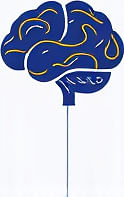ADHD and Creative Problem-Solving in Remote Work
 by Shanie Goodwin
by Shanie Goodwin
Discover how individuals with ADHD can leverage their unique thinking styles for creative problem-solving in remote work. This article offers practical advice to enhance productivity and achieve better work-life balance, drawing from real experiences and strategies.

Remote work presents both opportunities and obstacles for many adults. For those with ADHD, it can mean a flexible environment that supports innovative approaches to tasks. This flexibility allows for bursts of creativity that often lead to effective solutions in professional settings.
One key aspect is how creative problem-solving thrives with ADHD traits. People with ADHD frequently experience heightened imagination and the ability to think outside conventional boundaries. In remote setups, without the constraints of a traditional office, these traits can flourish. For instance, during a project deadline, someone might quickly generate multiple ideas that others overlook.
The Strengths of ADHD in Professional Contexts
In remote environments, ADHD can contribute to faster idea generation. This means individuals often connect unrelated concepts in ways that spark innovation. Such abilities are valuable in fields like design or programming, where fresh perspectives drive progress.
However, maintaining focus remains a common concern. To address this, establishing a dedicated workspace helps. A quiet area with minimal distractions can support sustained attention on tasks. Additionally, breaking work into smaller segments makes it easier to tackle complex problems without feeling overwhelmed.
Practical strategies include using timers to manage work periods. This method encourages regular breaks, which can refresh the mind and boost problem-solving capabilities. For example, working for 25 minutes followed by a short pause allows for reflection and new insights.
Balancing Work and Daily Life
Achieving work-life balance is essential for those with ADHD. Prioritizing tasks through simple lists can reduce stress and improve efficiency. By focusing on high-priority items first, individuals can allocate energy where it matters most.
Incorporating physical activity into the routine also plays a role. Short walks or stretching exercises during breaks can clear the mind and enhance cognitive function. This approach supports overall well-being and sustains creative energy throughout the day.
Communication with colleagues is another vital element. In remote teams, clear and concise exchanges help avoid misunderstandings. Sharing updates regularly ensures that ideas are conveyed effectively, fostering collaboration on problem-solving efforts.
Everyday Hacks for Productivity
Several simple techniques can make a difference. For instance, apps that organize thoughts and reminders assist in keeping track of ideas. These tools provide structure without overwhelming the user, allowing remote work to become more manageable.
Mindful practices, such as brief meditation sessions, offer another layer of support. Taking a few moments to breathe deeply can help center thoughts and prepare for challenges. This practice aids in maintaining a positive outlook on tasks.
It's also helpful to reflect on successes. Keeping a journal of accomplished projects reinforces the value of ADHD strengths. Over time, this builds confidence and encourages continued exploration of creative methods.
In team settings, leveraging ADHD for group dynamics can be beneficial. Bringing unique viewpoints to discussions often leads to better outcomes. For example, during virtual meetings, contributing spontaneous ideas can steer conversations toward innovative solutions.
Supporting Neurodiversity in Workplaces
Employers play a part in creating inclusive remote spaces. Providing resources like flexible hours acknowledges the diverse needs of employees. This support enables individuals with ADHD to perform at their best.
Peer networks offer additional encouragement. Connecting with others who share similar experiences provides tips and reassurance. These interactions build a sense of community and reduce feelings of isolation.
Ultimately, embracing ADHD traits leads to personal growth. By applying these strategies, adults can turn potential challenges into advantages. The key lies in adapting environments to suit individual styles, promoting both productivity and satisfaction.
In conclusion, remote work offers a platform for those with ADHD to excel in problem-solving. With the right approaches, creative abilities can shine, leading to fulfilling professional lives and improved balance.
